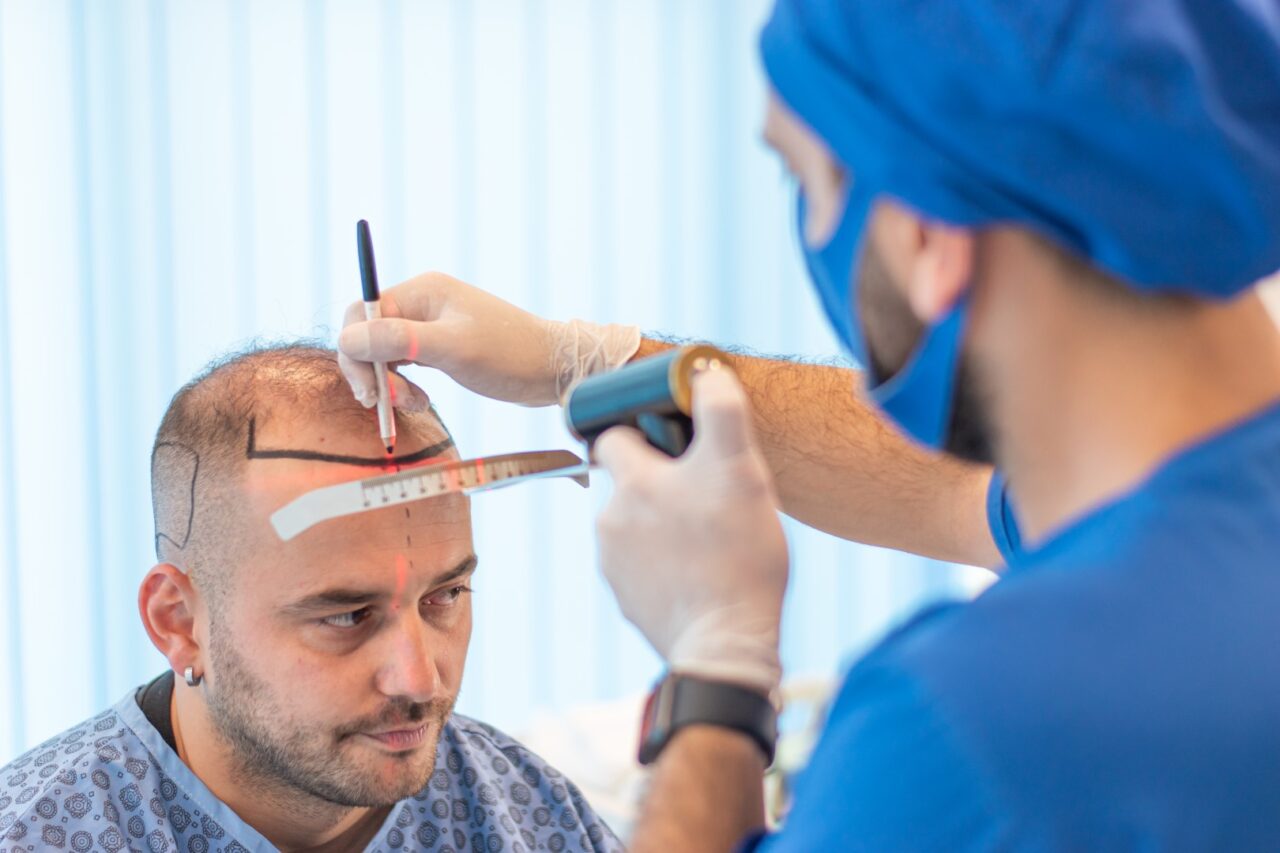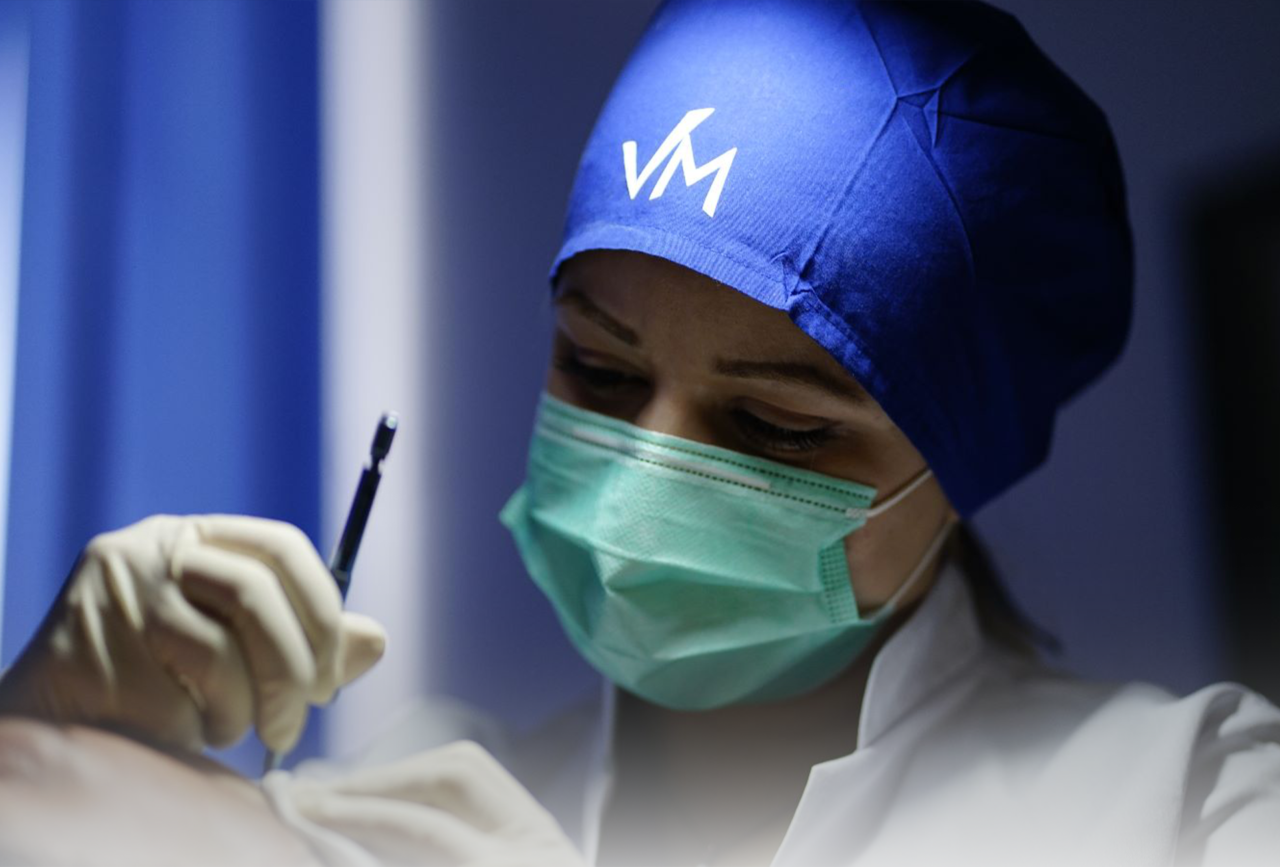Are you tired of dealing with hair loss and thinning hair? If so, you’re not alone. Hair loss affects millions of people worldwide and can have a significant impact on self-confidence and overall well-being. Fortunately, hair transplants have emerged as a popular solution for those seeking to restore a fuller and more youthful head of hair. If you’re considering a hair transplant, it’s important to have all the information you need to make an informed decision. In this comprehensive guide, we will walk you through everything you need to know about hair transplants. From understanding the different types of procedures available to the recovery process and long-term expectations, we’ve got you covered. We’ll debunk common misconceptions, share tips for finding the right surgeon, and explore the latest advancements in hair transplant technology. By the end of this guide, you’ll have a clear understanding of what to expect, whether a hair transplant is the right choice for you, and how to achieve the best possible results. Get ready to say goodbye to hair loss and hello to a fuller, more confident you.
Understanding the causes of hair loss
Hair loss can be a distressing experience, but understanding the underlying causes can help you take control of the situation. Several factors contribute to hair loss, including genetics, hormonal changes, medical conditions, and lifestyle choices.
Genetics play a significant role in hair loss, with male and female pattern baldness being the most common forms. This type of hair loss is usually hereditary and occurs gradually over time. Hormonal changes, such as those experienced during pregnancy or menopause, can also lead to hair loss. Medical conditions like alopecia areata and thyroid disorders can cause sudden or patchy hair loss. Lifestyle factors, including poor nutrition, stress, and excessive heat styling or chemical treatments, can also contribute to hair loss.
Understanding the causes of your hair loss can help determine if a hair transplant is the right solution for you. In some cases, treating the underlying cause may be enough to restore hair growth, while in others, a hair transplant may be necessary.
Hair transplant procedures have come a long way in recent years, offering more options than ever before. The two most common types of hair transplant procedures are follicular unit transplantation (FUT) and follicular unit extraction (FUE).
FUT, also known as strip harvesting, involves removing a strip of skin from the donor area (usually the back of the head) and dissecting it into individual follicular units. These units are then transplanted into the recipient area, where hair loss has occurred. FUT is a more invasive procedure and may leave a linear scar, but it can yield excellent results, particularly for those needing a large number of grafts.
FUE, on the other hand, involves extracting individual hair follicles directly from the donor area using a small punch tool. The follicles are then transplanted into the recipient area. FUE is a less invasive procedure and does not leave a linear scar, making it a popular choice for those who prefer shorter haircuts or have a limited donor supply.
In addition to FUT and FUE, there are other specialized techniques like direct hair implantation (DHI) and robotic hair transplantation. DHI involves using a specialized tool to implant the hair follicles directly into the recipient area, without the need for incisions or sutures. Robotic hair transplantation utilizes advanced robotics and artificial intelligence to assist surgeons in harvesting and transplanting hair follicles with precision and accuracy.
Choosing the right hair transplant procedure depends on various factors, including the extent of hair loss, donor supply, personal preferences, and the surgeon’s expertise. It’s essential to consult with a qualified hair transplant surgeon who can assess your unique situation and recommend the most suitable procedure for you. VatanMed exclusively uses the advanced hair transplantation methods FUE, Sapphire FUE and DHI, while the FUT method is rejected because it is outdated.

Choosing the right hair transplant surgeon
Finding the right hair transplant surgeon is crucial to achieving successful and natural-looking results. With the increasing popularity of hair transplants, it’s important to do research and choose a surgeon with the necessary skills, experience, and qualifications.
Start by looking for board-certified plastic surgeons or dermatologists who specialize in hair restoration. Check their credentials, including their education, training, and any additional certifications. Look for before and after pictures of their previous patients to assess the quality of their work. Reading patient reviews and testimonials can also provide valuable insights into the surgeon’s reputation and patient satisfaction.
During your consultation, ask the surgeon about their approach to hair transplantation, the techniques they use, and their success rates. It’s important to feeling comfortable with the surgeon and have confidence in their abilities. Don’t hesitate to ask questions and discuss your expectations openly. A good surgeon will take the time to understand your goals and provide honest advice about what can be realistically achieved.
Additionally, consider the clinic’s facilities and the level of support they offer throughout the entire process. Hair transplant surgeries can be lengthy, so ensure that the clinic provides a comfortable environment and a dedicated team to assist you before, during, and after the procedure.
Remember, choosing the right surgeon is a critical step in achieving the best possible hair transplant results, so take your time and make an informed decision.
VatanMed is a clinic that has been operating for 17 years in over 20 countries around the world. It is very easy to check that we have the necessary experience, and that we have top experts and thousands of satisfied patients who perform procedures in top conditions. VatanMed experts are highly educated and trained in the field of hair transplantation.

Preparing for a hair transplant surgery involves a few essential steps to ensure optimal results and a smooth recovery. Here are some key considerations to keep in mind:
1. Consultation and Evaluation: Schedule a consultation with your chosen surgeon to assess your suitability for a hair transplant. During this appointment, the surgeon will evaluate your hair loss pattern, donor supply, and overall health to determine if you’re a good candidate for the procedure.
2. Medications: If you’re taking any medications or supplements, inform your surgeon during the consultation. Some medications, like blood thinners, may need to be discontinued before the surgery to minimize the risk of bleeding.
3. Smoking and Alcohol: Avoid smoking and consuming alcohol for at least a week before the surgery, as they can interfere with the healing process.
4. Blood Tests: Your surgeon may request blood tests to ensure that you’re in good health and can undergo the surgery safely.
5. Hair Care: Follow your surgeon’s instructions regarding hair care before the surgery. This may include avoiding hair coloring or chemical treatments in the weeks leading up to the procedure.
6. Pre-operative Instructions: Your surgeon will provide you with specific pre-operative instructions, such as fasting before the surgery and avoiding certain medications or foods.
By following these preparation guidelines, you can ensure that you’re physically and mentally ready for your hair transplant surgery.
The hair transplant procedure explained
The hair transplant procedure is typically performed on an outpatient basis, meaning you won’t need to stay in the hospital overnight. It generally involves the following steps:
1. Anesthesia: Before the procedure begins, the surgeon will administer local anesthesia to numb the donor and recipient areas. This ensures that you remain comfortable throughout the surgery.
2. Donor Area Preparation: For FUT, the surgeon will remove a strip of skin from the donor area and close the incision with sutures. For FUE, individual hair follicles are extracted directly from the donor area. The donor area is carefully selected to ensure that the harvested hair follicles are of the highest quality.
3. Graft Preparation: Once the donor area is prepared, the surgeon and their team will separate the harvested grafts into individual follicular units. This involves meticulous work to ensure that the grafts are intact and ready for transplantation.
4. Recipient Area Creation: The surgeon will create tiny incisions or recipient sites in the recipient area, following the natural hairline and pattern. The angle and direction of the incisions are crucial to achieving natural-looking results.
5. Graft Placement: The prepared grafts are then carefully placed into the recipient sites, ensuring that they are properly aligned and positioned. This part of the procedure requires precision and attention to detail.
The duration of the hair transplant procedure varies depending on the number of grafts being transplanted. It can range from a few hours for smaller procedures to a full day for more extensive cases. Throughout the surgery, you’ll be able to communicate with the surgical team and take breaks as needed.

Recovery and post-operative care
After the hair transplant surgery, it’s important to follow your surgeon’s post-operative instructions to ensure a smooth recovery and optimal results. Here are some general guidelines to keep in mind:
1. Medications: Your surgeon may prescribe medications to manage pain, prevent infection, and promote healing. Take these medications as directed and report any unusual symptoms or concerns.
2. Dressings and Bandages: The donor and recipient areas may be covered with dressings or bandages immediately after the surgery. Follow your surgeon’s instructions regarding when and how to remove them.
3. Washing and Shampooing: Your surgeon will provide specific instructions on when and how to wash your hair after the surgery. It’s important to be gentle and avoid rubbing or scratching the scalp.
4. Physical Activity: Avoid strenuous activities, heavy lifting, and intense exercise for at least a few weeks after the surgery. This allows the transplanted hair follicles to heal and settle into their new location.
5. Follow-up Appointments: Schedule and attend all follow-up appointments with your surgeon. These visits are essential for monitoring your progress, addressing any concerns, and removing any sutures if necessary.
It’s normal to experience some swelling, redness, and mild discomfort in the days following the surgery. However, if you notice excessive bleeding, severe pain, or any signs of infection, contact your surgeon immediately.
Potential risks and complications of hair transplants
Like any surgical procedure, hair transplants come with potential risks and complications. It’s essential to be aware of these risks and discuss them with your surgeon before making a decision. Some possible risks include:
1. Infection: Although rare, there is a risk of infection at the donor or recipient sites. Following your surgeon’s post-operative care instructions and keeping the surgical areas clean can help minimize this risk.
2. Bleeding: Some bleeding is normal during and immediately after the surgery. However, excessive bleeding may occur in rare cases. It’s crucial to inform your surgeon if you experience persistent bleeding.
3. Scarring: FUT may leave a linear scar at the donor site, while FUE typically results in small punctate scars. The appearance of scars can vary depending on individual healing and the surgeon’s technique.
4. Poor Growth or Density: While hair transplants generally yield successful results, there is a small risk of poor growth or density. Factors like the quality of the donor hair, the surgeon’s technique, and individual healing can impact the final outcome.
5. Shock Loss: Some existing hair follicles in the recipient area may go into a temporary shedding phase known as shock loss. This is a normal part of the healing process and should not cause concern. The transplanted hair follicles should continue to grow in their new location.
It’s important to have realistic expectations and understand that hair transplantation is not a guaranteed solution for everyone. Consulting with a qualified surgeon and discussing your concerns can help you make an informed decision.
Success stories and before/after pictures
Hair transplant success stories and before/after pictures can provide valuable insights into the potential results and the transformative power of these procedures. Many individuals have achieved remarkable improvements in their hairline, density, and overall appearance through hair transplantation.

When looking at success stories and before/after pictures, pay attention to individuals with similar hair loss patterns and characteristics to your own. This can help you visualize the potential outcomes and set realistic expectations. Remember that individual results can vary, and it’s important to consult with a qualified surgeon to assess your unique situation.
Conclusion and final thoughts
Hair transplant have revolutionized the field of hair restoration, offering a reliable and effective solution for those seeking to combat hair loss. By understanding the causes of hair loss, exploring different types of procedures, and choosing the right surgeon, you can make an informed decision about whether a hair transplant is the right choice for you.
Remember to prepare for the surgery by following your surgeon’s instructions, and take care of yourself during the recovery period. While there are potential risks and complications associated with hair transplants, these procedures have helped countless individuals regain their confidence and achieve natural-looking results.
If you’re ready to say goodbye to hair loss and hello to a fuller, more confident you, consult with a qualified hair transplant surgeon to explore your options. With the right information and guidance, you can take the first step towards a hair transformation that will leave you feeling happier and more comfortable in your own skin.




